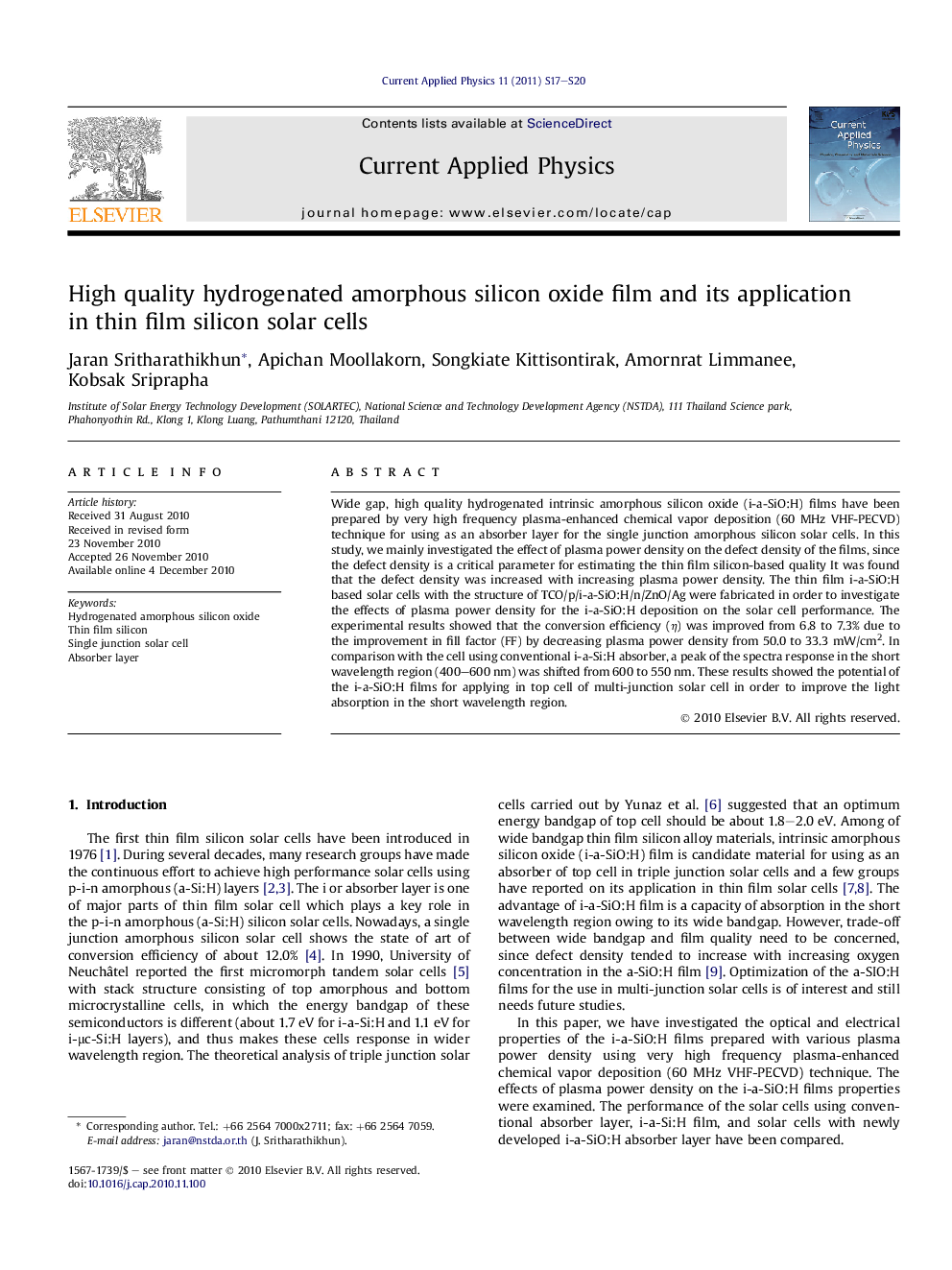| Article ID | Journal | Published Year | Pages | File Type |
|---|---|---|---|---|
| 1786886 | Current Applied Physics | 2011 | 4 Pages |
Wide gap, high quality hydrogenated intrinsic amorphous silicon oxide (i-a-SiO:H) films have been prepared by very high frequency plasma-enhanced chemical vapor deposition (60 MHz VHF-PECVD) technique for using as an absorber layer for the single junction amorphous silicon solar cells. In this study, we mainly investigated the effect of plasma power density on the defect density of the films, since the defect density is a critical parameter for estimating the thin film silicon-based quality It was found that the defect density was increased with increasing plasma power density. The thin film i-a-SiO:H based solar cells with the structure of TCO/p/i-a-SiO:H/n/ZnO/Ag were fabricated in order to investigate the effects of plasma power density for the i-a-SiO:H deposition on the solar cell performance. The experimental results showed that the conversion efficiency (η) was improved from 6.8 to 7.3% due to the improvement in fill factor (FF) by decreasing plasma power density from 50.0 to 33.3 mW/cm2. In comparison with the cell using conventional i-a-Si:H absorber, a peak of the spectra response in the short wavelength region (400–600 nm) was shifted from 600 to 550 nm. These results showed the potential of the i-a-SiO:H films for applying in top cell of multi-junction solar cell in order to improve the light absorption in the short wavelength region.
► The advantage of wide gap i-a-SiO:H film is a capacity of absorption in the short wavelength region. ► The fill factor can be improved by decreasing plasma power density. ► The potential of the a-SiO:H films is to use it as a top cell in multi-junction solar cell.
